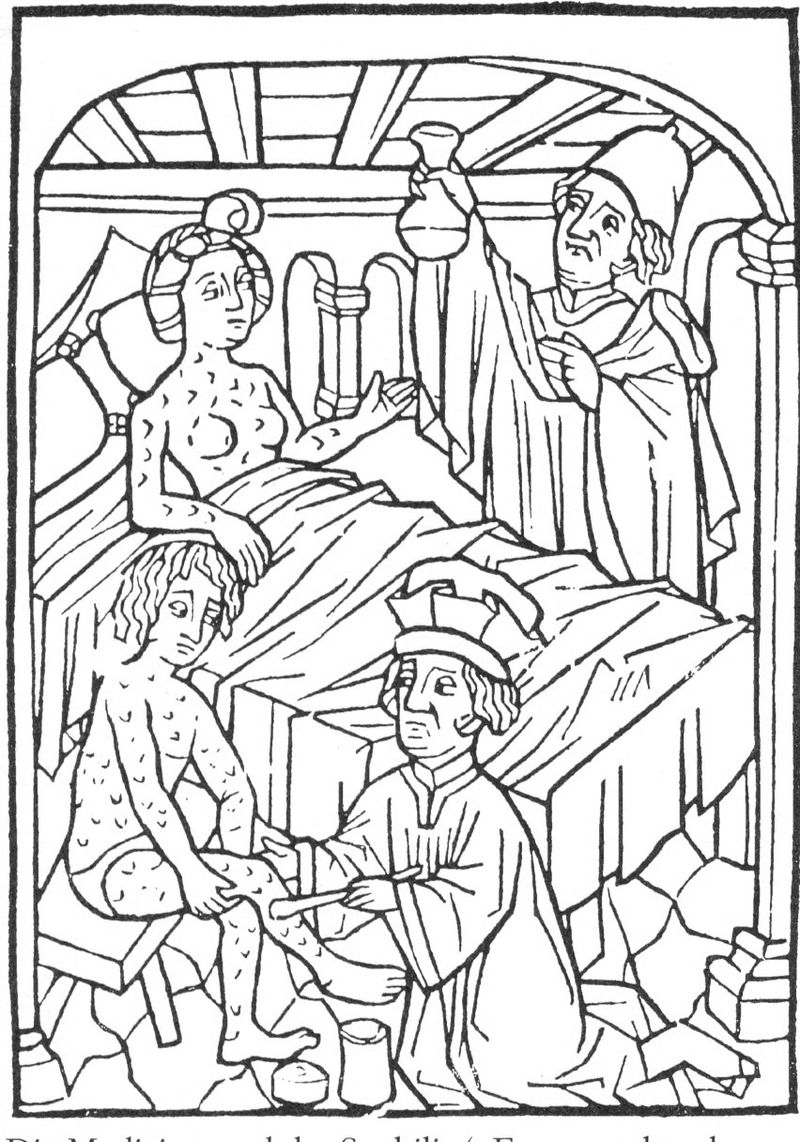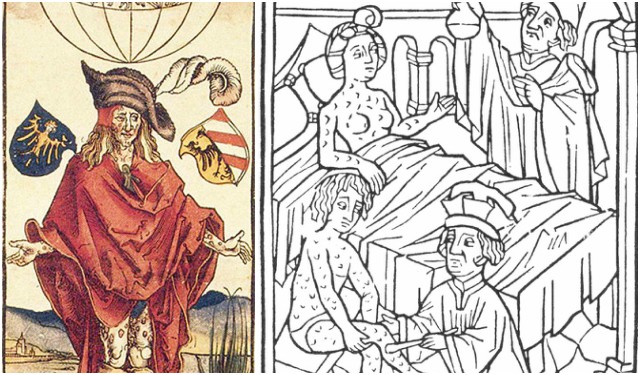When Charles VIII of France invaded Naples in the first of the Italian Wars in 1495 a new disease broke out among his soldiers – it was syphilis.
Although its mortality can’t be compared with the mortality caused by the Bubonic plague it was still one of the most dangerous diseases in the history of mankind.
Its symptoms were painful and repulsive and there were only a few remedies that were hardly efficacious.
Sexually transmitted diseases (STD’s) were a cause of death to many military service members throughout history. For example, they were the second most common reason for disability and absence from duty in the US Army during World War I.

At first, it was thought that syphilis had been brought from America and the New World to the Old World by Christopher Columbus in 1493. But in 1934 it was stated that syphilis had previously existed in the Old World before Columbus.
In the summer of 1494, King Charles VIII of France and his army of 50,000 soldiers were headed to northern Italy in order to take over the Kingdom of Naples from Alphonso II.
The purpose was to use Naples as a base from which to launch a campaign to the Crusades. The mission was accomplished in February 1495 when Charles VIII of France occupied Neapol. After that, the French soldiers indulged in a long bout of celebration and debauchery, and after a short period of time, they were afflicted by a terrible disease.

The disease started with genital ulcers, followed by fever and muscle pains, and then months later large, painful and foul-smelling abscesses and sores, all over the body. The sores became ulcers that could eat into bones and destroy the nose, lips, and eyes.
At that time the disease was much more severe than the syphilis of today, and it was more easily spread. Since it was a new disease that was never seen before there was no treatment against it.
The soldiers of King Charles were so ill that they were unable to fight and Charles had to retreat back to France. That is how soldiers took the disease with them back to France. The epidemic had spread so fast that by the end of the year it had spread throughout France, Switzerland, and Germany, and reached England and Scotland in 1497.
By 1500 syphilis had reached the Scandinavian countries, Britain, Hungary, Greece, Poland and Russia. Explorers took the disease to Calcutta in 1498, and by 1520 it had reached Africa, the near East, China, Japan and Oceania.

Since there was no official name for the disease people usually named it after an enemy or a country they thought responsible for it.
The French called it the “Neapolitan disease”, or the “Spanish disease”, and also the “great pox”, the English and Italians called it the “French disease”, or the “French pox”, Germans called it the “French evil”, the Russians called it the “Polish disease”, the Polish and the Persians called it the “Turkish disease”.
The Turkish called it the “Christian disease”, the Tahitians called it the “British disease”, in India it was called the “Portuguese disease”, in Japan it was called the “Chinese pox.”
The name for the disease, “syphilis”, originates from an epic Latin poem Syphilis, sive morbus gallicus, “Syphilis, or the French disease”, published in 1530 by Girolamo Fracastoro.
